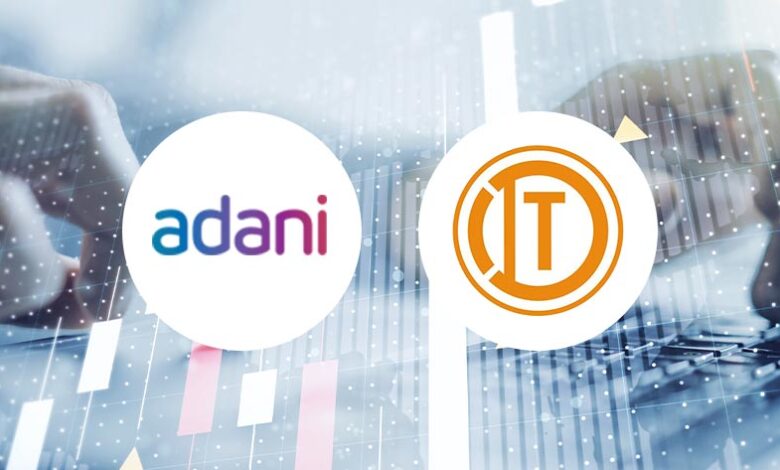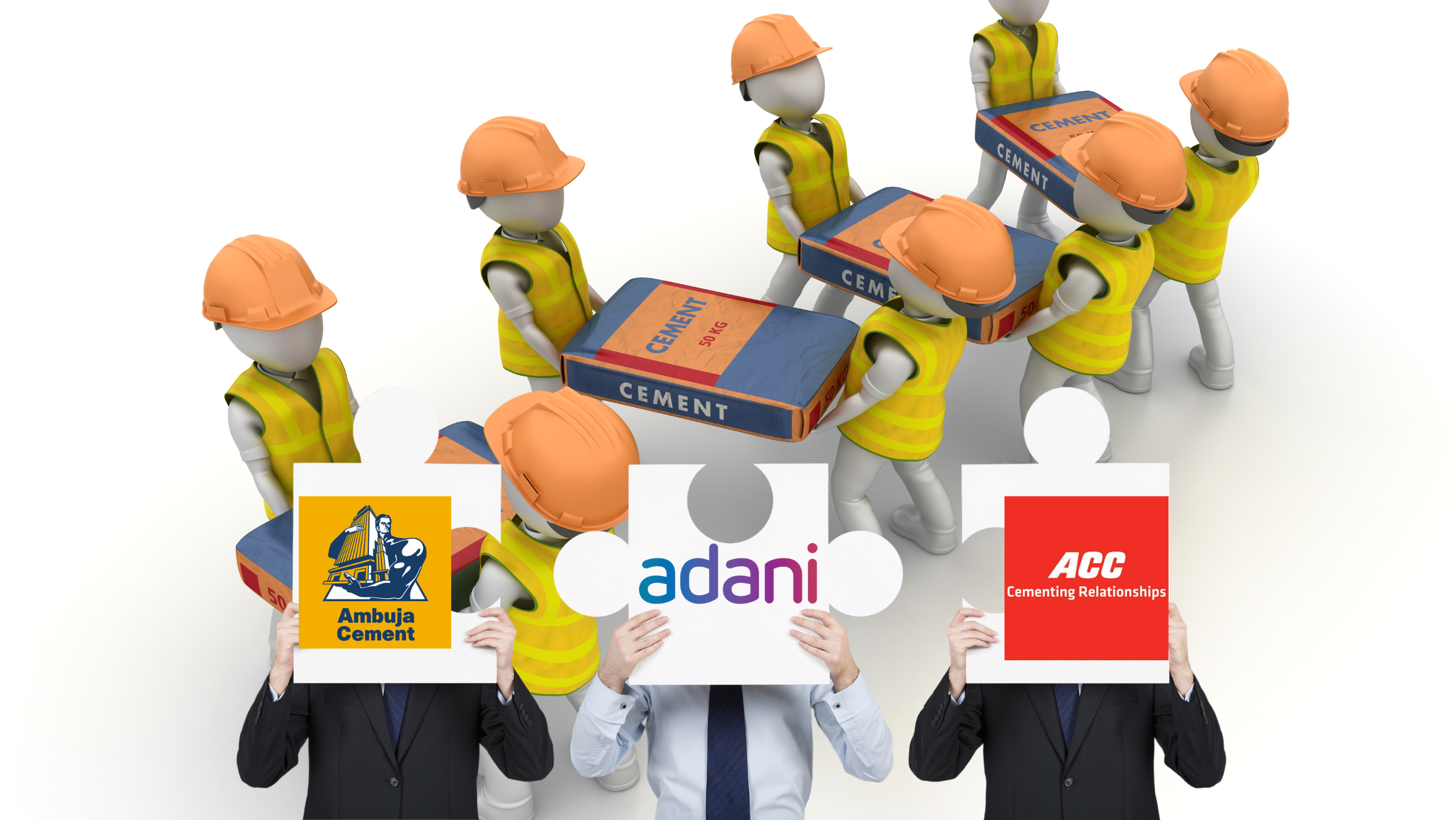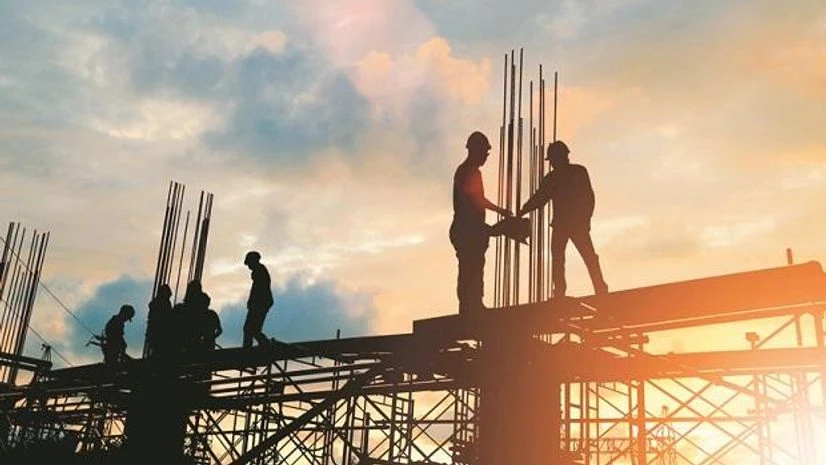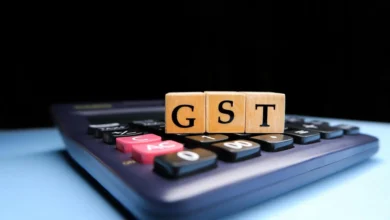Adani Group Steps Up On Gas, Another Acquisitions, 46.64% Stake In ITD Cementation India For Rs 5,888.57 Crore; The Battle For Market Dominance, Why Are Titans Clashing For Cement?
India's infrastructure boom is in full swing, and whoever controls the cement supply holds the key to this construction kingdom. Adani Group has been known to follow an acquire & dominate strategy for capturing market segments. Aditya Birla Group, however, has dominated the cement industry in India through Ultratech for a while now. As even-growing public and private spending on infrastructure, both players are keen to capture the majority share to dominate the cement supply, which is essential for construction. In the latest Adani Group has emerged as a frontrunner in the race to acquire a stake in ITD Cementation India.

As large corporations continue to acquire smaller companies to expand their dominance, the current state of India’s cement industry resembles a battlefield from past centuries and with Adani Group continuing to make aggressive moves in the sector, 2024, has seen a significant escalation in this competition.
Honing on this strategy, Adani has emerged as the leading contender to acquire a 46.64% stake in ITD Cementation India, a move aimed at strengthening its own civil engineering capabilities, according to sources familiar with the situation.
The deal is estimated to be worth Rs. 5,888.57 crore (approximately $700 million), based on current market value, which includes an open offer following the promoter stake acquisition.
Reportedly, an agreement between both parties was reached earlier this week, with an official announcement expected soon.
Notably, ITD Cementation India, originally a UK-based engineering, procurement, and construction (EPC) company, has changed ownership multiple times since India’s independence.
At the end of the June quarter, the company’s promoter, Italian-Thai Development Public Co, held a 46.64% stake. In July, the company informed stock exchanges that its promoters were considering divesting their investments, though no final agreement had been reached at that time.
The Adani Group is said to have outbid competitors, including a top Abu Dhabi dredging company and KEC International from the RPG Group.
With a market value of Rs. 8,107 crore, the sale of the promoter stake would trigger an open offer for an additional 26% ownership. Notably, the Massachusetts Institute of Technology (MIT) holds a 4.5% stake in ITD Cementation as of the end of June.
Despite the rise in stock prices, analysts suggest that the deal could be finalized at a value lower than the market price, as the company’s shares have surged—tripling in value over the year up to July and increasing 114% in the past year.

Building Strong Foundations, ITD Cementation India
ITD Cementation India has established itself as a leader in constructing maritime structures and large-scale engineering projects, including major metro developments in Delhi and Kolkata.
The company has also played a key role in developing ports such as Tuticorin, Haldia, Mundra, and Vizhinjam, along with working on the Jawaharlal Nehru Port Trust.
Its expertise in maritime infrastructure—such as wharfs, piers, container terminals, berths, and oil jetties—makes up 34.5% of its order book, the largest share of its business.
ITD already has strong ties with the Adani Group, collaborating on hydropower, marine projects, and the 594-km Ganga Expressway toll road.
The Surprise
However, the announcement in July of a potential stake sale came as a surprise, particularly since ITD had recently secured a Rs 1,082 crore contract for the Dahej LNG Terminal.
Considering, earlier in February, management had forecasted new orders worth Rs 8,000-10,000 crore for FY25; analysts speculate that the surge in the company’s stock may have led management to consider capitalizing on market momentum and exploring a sale.

What It Means For Adani Group?
This deal, if it goes through would mark Adani Group’s 11th acquisition this year; the transaction is expected to be completed through Adani Enterprises Ltd (AEL), the group’s flagship company.
AEL’s stock, as of Thursday, was trading at Rs 2,942.35 on the BSE, with a market value of Rs 3.35 lakh crore.
The potential acquisition coincides with AEL’s partnership with Israel’s Tower Semiconductors on a $10 billion semiconductor plant in Maharashtra, announced recently by Deputy Chief Minister Devendra Fadnavis.
As the Indian government launched several large-scale infrastructure projects, ITD Cementation’s engineering, procurement, and construction (EPC) business is expected to see sustained growth.
Simultaneously, ITD is also expanding into pumped storage and specialized hydropower projects, which are gaining popularity among renewable energy providers like Adani Green, which aims to offer round-the-clock green energy solutions.
ITD anticipates new tenders worth Rs 5,000-6,000 crore in the coming fiscal year for hydropower and pumped storage projects, along with large-scale solar developments.
Note To Retail Investors
Despite the news of the potential sale, ITD Cementation’s management has reassured stakeholders that its operations will remain unaffected.
During an earnings call in August, CFO Prasad Patwardhan stated that the company is not reliant on funding or guarantees from its parent company, and day-to-day operations are expected to continue as normal.
Managing Director Jayanta Basu added that any new parent would have a vested interest in growing the company, as that would be the reason for their investment in the first place.
In the June quarter, ITD Cementation secured orders worth over Rs 1,053 crore. Its multi-year order book now stands at Rs 18,536 crore, with nearly half (48%) of its contracts coming from the government, 35% from the private sector, and 17% from public sector units.
ITD is working across 13 Indian states and one Union territory, as well as on international projects in Sri Lanka and Bangladesh.
In addition to its strength in maritime infrastructure, ITD Cementation also specializes in urban infrastructure projects like metro systems, highways, bridges, flyovers, industrial buildings, hydropower, dams, irrigation projects, and specialized engineering work such as tunneling, foundations, and water and waste management.
The company’s current name and structure came about in 2004 when Italian-Thai Development Public Co entered into a share purchase agreement with the UK-based Cementation Co and Skanska AB. Following this, ITD Cementation was incorporated under its new name on May 26, 2005, marking the third time the company had changed ownership.

The Battle for Market Dominance
In case one is wondering that this may be a new trend, in actuality the trend of acquiring regional cement companies can be traced back to 2018, when Ultratech acquired Binani Cement, marking the beginning of a fierce competition for market control.
Since then, both the Adani Group and Birla Group have been steadily expanding their presence across India. Ultratech strengthened its hold in the western region with Binani Cement and recently acquired India Cements to secure the southern states.
Meanwhile, Adani made waves by acquiring Penna Cement in Hyderabad this year, following its 2022 acquisition of majority stakes in Ambuja Cements and ACC.
But why the focus on cement? Why are these industrial giants battling for control of this sector?
The answer lies in India’s infrastructure boom. With construction surging, controlling the cement supply means holding the key to the country’s building future.
Adani Group’s strategy has always revolved around acquisitions and dominance in key markets, while Aditya Birla Group, through Ultratech, has long maintained its lead in India’s cement industry.
Both are vying to establish leadership, aiming to capture the largest share of cement supplies critical for ongoing and future construction projects.
Where is the cement sector headed?
While the Adani and Aditya Birla groups have been fighting for market dominance, over the past decade, they have made over a dozen acquisitions, aiming for a combined capacity of over 200 MTPA by 2030.
What about cement prices?
Will consumers benefit from this intense competition for industry dominance?
The answer to this is that in the short term, yes as the rivalry could lead to lower prices, which is good news for buyers at the same time price drops shouldn’t come at the expense of quality.
Another thing to understand here is that as power consolidates into a few mega-corporations, it would mean the risk of reduced competition and over time, this could lead to smaller players being squeezed out, which might result in higher prices in the future.

A familiar story?
The current state of the cement industry bears a striking resemblance to the telecom sector in India back in 2016; when Reliance Industries launched Jio, it completely disrupted the market, forcing other telecom players to compete on Jio’s terms.
The result was, that tariffs plummeted, companies folded or merged, and today, Jio commands about 40% of India’s telecom market.
Experts suggest that the shifting dynamics in both cement and telecom are tied to the government’s industrial policy.
However, current policies seem to favour companies that achieve dominance in key sectors of the economy, which is led in India by two of Asia’s richest men- Gautam Adani and Mukesh Ambani.
Hence, if one looks closely, this strategy of nurturing “National Champions” appears to be influenced by South Korea’s Chaebols and Japan’s Zaibatsu conglomerates, which gained prominence decades ago.
K-Drama Much
If you’re a fan of K-dramas, the term chaebol may sound familiar.
These family-owned business conglomerates in South Korea became well-known not just for their economic influence but also for their central role in Korean pop culture.
Originating in the 1960s, chaebols were instrumental in driving Korea’s rapid economic growth; however, their governance structures, dominated by controlling families, have raised concerns among external investors due to the lack of transparency and accountability.
Japan too had a similar corporate structure in its zaibatsu—powerful financial and industrial conglomerates that played a dominant role during World War II. Companies like Hyundai in Korea and Mitsubishi in Japan are prime examples of these large, influential groups.
)
Cut Copy Paste
In India, a similar trend has been emerging.
The former Deputy Governor of the Reserve Bank of India (RBI), Viral Acharya, has pointed out that over the past decade, the central government has increasingly focused on achieving economic growth by working with large conglomerates, instead of relying on state governments.
In a 2023 paper presented at the Brookings Institution, Acharya accentuated this trend across several key sectors noting that between 2016 and 2021, the share of the top five business groups in sales grew dramatically.
Let’s look at these numbers-
- in civil engineering and construction, their share rose from 31% to 42%; in telecommunications, it jumped from 65% to over 84%; and in retail, it increased from 44% to over 65%.
- Similarly, by 2021, the top five groups held 68% of assets in basic metal manufacturing, 26% in chemicals, and a massive 90% in the production of refined petroleum and coke.
- In the non-metallic minerals sector, including cement and building materials, they controlled 47% of assets.
So what is the problem here?
While this strategy of backing ‘national champions’ has led to rapid growth in sectors like telecommunications, it comes with risks.
It could create an oligopoly—an economy dominated by a few large players—which would restrict the entry of new firms and limit innovation.
Additionally, concentrating too much power in the hands of a few companies raises the specter of crony capitalism.
National Champions, Benefits and Challenges
Further expanding on this point, Arvind Subramanian and Josh Felman, in their paper India’s Stalled Rise, argue that this strategy might have even greater consequences in India than in other countries.
They point out that India’s two largest conglomerates—Adani Group and Reliance Industries, led by Mukesh Ambani—have an overwhelming presence across numerous sectors: defense production, ports, airports, energy, telecommunications, media, retail, textiles, and even education.
While chaebols and zaibatsu had their own challenges, such as autocratic decision-making and leaning toward oligopoly, they were exposed to international competition, which acted as a check on their power. Hyundai, for example, faced fierce global competition in the automobile industry.
However, when we apply this in India’s case, the same system of checks and balances isn’t as strong, and government policy plays a much more significant role in shaping market dynamics.
Acharya further noted that India’s large conglomerates have expanded not just at the expense of smaller firms but also at the expense of medium-sized companies. His research also showed a link between growing market power and increased profit margins.
Therefore, as India undergoes a significant shift in infrastructure and tries to capture market share that may be vacated by China, this tilt in policy could have major consequences.
Consolidation can drive efficiency and growth, however, India must tread carefully to avoid stifling competition and innovation, especially at such a critical moment in its economic journey.




